Cascading Data Master Workflows in Quadient

Are you facing a large-scale migration from one or more legacy publishing systems and looking to consolidate on Quadient Inspire? If so, you’re probably wondering how to organize and maintain a myriad of different data inputs while employing an efficient design that ensures a pattern of workflow, template, and block reuse across various business functions and output demands. You could easily create unique Data Master workflows in Inspire Designer to service each different document type, but you’d virtually eliminate any ability to reuse common resources across different templates and would almost certainly be reinventing the wheel with each Data Master workflow.
The Importance of Data Organization
Before migrating any content to Quadient Inspire, it’s imperative that you take a holistic approach to organizing and reviewing upstream data with the goal of understanding what is “common” and what is truly unique to certain business functions and document types. For example, let’s assume that you’re looking to migrate 3 different legacy insurance applications to Inspire that perform the following functions:
- policy document generation
- claims letter creation and generation
- statement generation
Regardless of what solutions these applications were running on, we can all agree that they share some common data yet ultimately require different data models to drive document content and assembly. Policy forms will need information pertaining to coverages, limits, and other policy-specific bits, claims letters will need data for each party to be copied on the claim, and statements will require specific information related to billing, invoicing and other accounts-receivable details. It’s very important to understand what data will be required for each business function, how it will drive content and assembly of documents, and how to create an efficient domain model design that is easy to implement, support, and maintain.
A Smarter Approach to Data
Unlike older CCM solutions like Documerge or Documaker, Quadient has a unique ability to inherit resources and accommodate multiple data inputs within a single Inspire workflow. You can take advantage of these features to organize your data to align correctly with your downstream content and assembly requirements for each business function and group of document types.

Using our example above, we can use Inspire Designer to create 4 different workflows to organize the data efficiently:
- Core Data Master – used to ingest and organize all data structures that are common across business functions.
- Policies Data Master – inherits all Core Data Master variables via an External Workflow and introduces data inputs specific to policy issuance.
- Claims Data Master – inherits all Core Data Master variables via an External Workflow and introduces data inputs specific to claims-letter generation and processing.
- Statements Data Master – inherits all Core Data Master variables via an External Workflow and introduces data inputs specific to statement generation and billing.
This cascading Data Master Workflows approach to variable organization ensures an efficient and durable data architecture such that each business function works with contextually-appropriate data for content and document assembly. The net result is a solution that will more efficient processing-wise, will be easier to for business users to navigate and understand, and will be more durable and accommodating of change in the future.
If you’d like more information regarding data organization in Inspire Designer, or need some certified assistance with a Quadient project, please contact us today.
Related Posts

Moving Documaker with MigrationXpress
Organizations of all shapes and sizes are consolidating CCM platforms and moving business critical applications…

Moving Documaker to the Cloud
Complex CCM/UX applications have been some of the slowest to move to the cloud mainly…

Choosing the Right Quadient Delivery Partner
Taking on a large Quadient Inspire project can be a daunting task. Your team knows…
